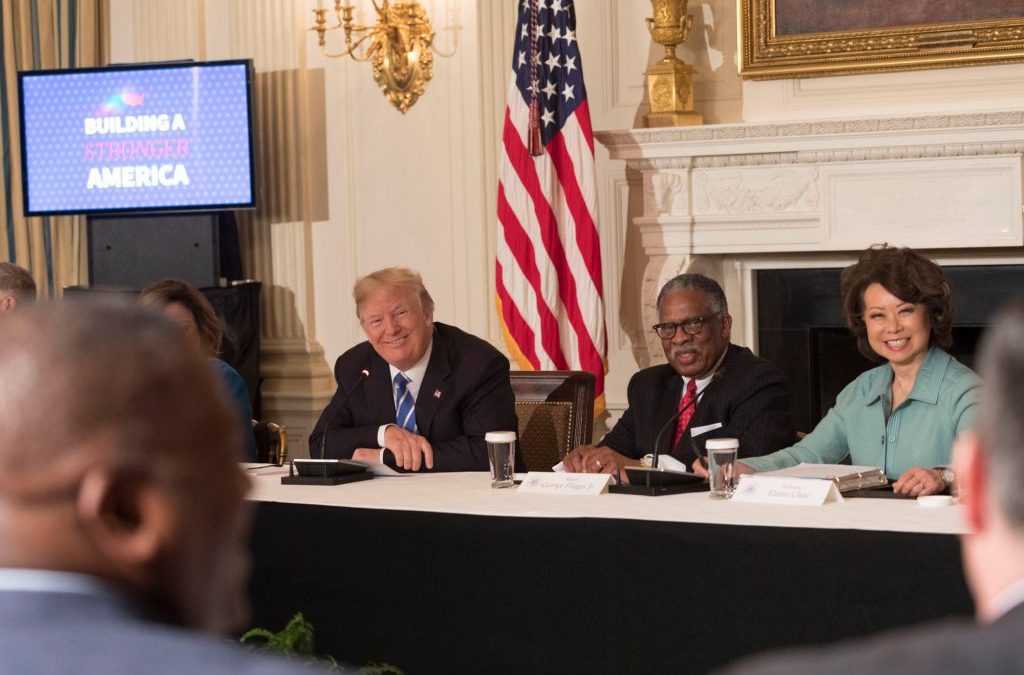WASHINGTON – President Donald Trump’s infrastructure proposal sets aside $50 billion in block grants specifically for rural infrastructure projects — 25 percent of the proposed $200 billion federal infrastructure funding – but the money may not end up helping rural communities as much as the administration anticipates, experts say.
%
25 percent of all proposed federal infrastructure funding would go specifically toward rural infrastructure projects.
In particular, the discretionary nature of block grants may mean that essential needs take a back seat to flashier highway projects, and the requirement for private investment will be a high hurdle for rural communities.
Under the plan, 80 percent of the $50 billion allotted for rural federal block grants over 10 years goes directly to state governors, who then have the discretion to choose projects according to the “unique rural needs” of their states. The remaining 20 percent will be distributed through rural performance grants to “encourage the best use of taxpayer dollars.”
- 80 percent of the rural block grant money would be given directly to state governors, who experts say might use those funds for flashy highway projects instead of real infrastructure needs. 80%
“I think there could be some bad projects here,” said Aaron Renn, a senior fellow at the Manhattan Institute, a think tank that supports free-market solutions to public policy issues. “Rural areas do have infrastructure needs – they need broadband investment, there are small-town sewer systems and such that need to be fixed, but a lot of times these governors just like to build highways.”
However, there is evidence that rural communities, like their urban counterparts, have more need for road and bridge improvements than simple highway expansion. Trip, a transportation research group funded by insurance companies, construction companies and labor unions, found last year found that 36 percent of America’s rural roads and bridges are in “poor or mediocre” condition. Furthermore, rural roadways see 2.5 times more accidents and fatalities than urban roads, and 40 percent of rural communities do not have access to any forms of public transportation.
%
36 percent of America's rural roads in bridges are in "poor or mediocre condition."
- 40 percent of rural communities do not have access to any forms of public transportation. 40%
Rural roadways see 2.5 as many accidents and fatalities as urban roads.
Brian Cavey, a lobbyist for CoBank, a national cooperative that loans money to rural communities, said that the block grants are a fundamental recognition of these uniquely rural struggles in regards to infrastructure.
“You can’t raise the resources and there isn’t the demand [in rural areas],” Cavey said, “so I think the fact that there is a rural set-aside is a recognition by the administration that things are different in rural areas and you need to look for rural solutions.”
The president’s proposed federal-state funding formula is another component of the plan likely to hurt rural communities. Historically, presidents have followed a funding formula where the federal government supplies the majority of infrastructure funding: It will typically supply 80 percent of the funding for interstate and federal highways. Trump’s proposal, however, would require that states spend at least $4 for every $1 in federal money that they receive.
- Historically, the federal government has contributed 80 percent of funding to most infrastructure projects. 80%
- The president’s current proposal would reverse this, and only contribute 20 percent of federal funds to most infrastructure projects. 20%
Experts say this will be challenging for rural communities, both because they have fewer resources and they are less attractive for private investment. Tracy Gordon, a senior fellow at the left-leaning Urban Institute, said that often, private investors are reluctant to invest in rural projects because they don’t anticipate the same type of return on their investment that they would get from urban projects.
“The issue is that the type of projects that would get private support would be the types of projects that you can charge people to use, like toll roads or a transit system,” Gordon said, “because they produce a revenue stream that ensure that investors will get a return on the money that they put up front to build the project.”
In a rural area, which is defined in the Trump plan as a community with fewer than 50,000 people, establishing this type of reliable revenue stream is more difficult. In 2016, CoBank’s annual report on the rural-urban divide found that rural areas had a 5.4 percent unemployment rate, compared with 4.8 percent unemployment in urban areas.
“Infrastructure is capital-intensive, so you need a broad base of users and taxpayers to shoulder the burden of that capital cost, and this is hard for small communities,” Debra Knopman, a principal researcher at the think tank RAND Corporation, said.
As a result, experts are questioning the real benefits of Trump’s proposal would have on rural communities are in question.
“In our country, we need to take care of both urban and rural areas,” Renn said. “I do think that the way this is structured, however, is an incentive for questionable rural highways in a way that the other money isn’t.”


